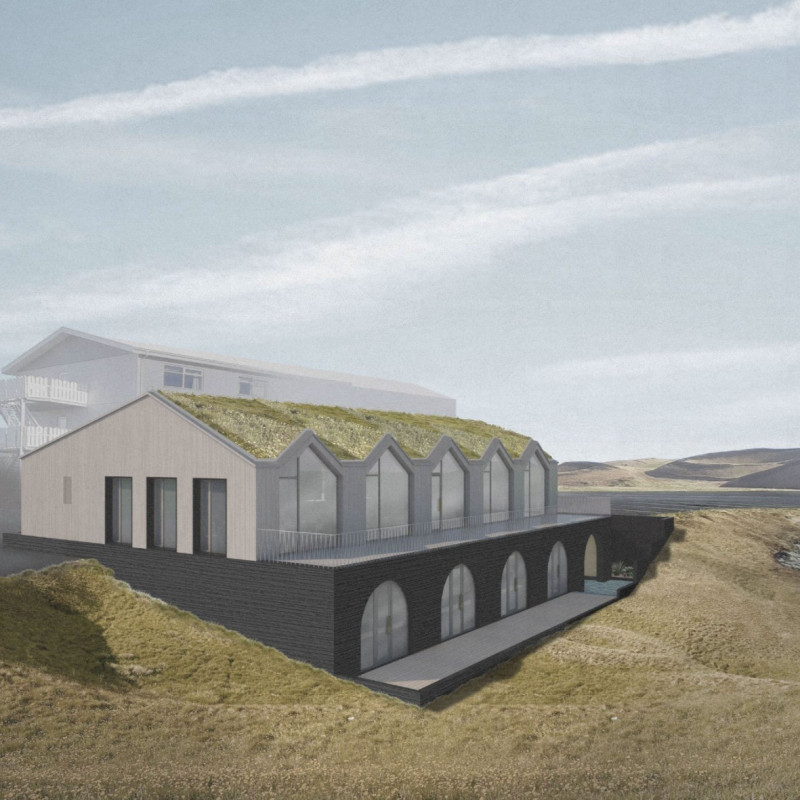5 key facts about this project
At the core of this architectural design is the concept of connectivity, both physically and socially. The layout encourages interaction among visitors, integrating indoor and outdoor spaces seamlessly. The building's exterior is an insightful reflection of its function, employing a material palette that harmonizes with the surrounding urban landscape. The use of brick and glass not only provides a timeless aesthetic but also promotes energy efficiency through natural lighting and thermal performance. The choice of durable and low-maintenance materials speaks to the longevity of the design and its commitment to sustainability.
The façade features a striking interplay of transparency and solidity, where expansive glass panels allow natural light to flood the interior spaces while offering views of the surrounding area. This design choice enhances the overall ambiance and invites the public to engage with the building. The strategic placement of windows not only illuminates the interior but also contributes to passive heating, reducing energy consumption over time. At street level, the entrance is accentuated by a welcoming atrium that serves as a gathering point, further designed to foster community engagement.
Internally, the facility is organized into flexible spaces that can be adapted for various uses. The main auditorium is equipped with advanced audio-visual technology, highlighting the project’s commitment to supporting diverse events. Adjacent to the auditorium, multipurpose rooms can be used for workshops, lectures, or as informal gathering spaces for community discussions. These areas are designed with movable partitions, allowing for reconfiguration according to specific needs.
Landscaping around the building plays a crucial role in enhancing the overall experience. Thoughtfully designed gardens and gathering spaces create inviting outdoor environments for users and provide a sense of privacy and refuge from the urban bustle. The inclusion of native plant species not only promotes biodiversity but also requires less maintenance and water, demonstrating the project’s eco-conscious ethos.
Unique design approaches are evident in the incorporation of sustainable technologies throughout the project. Solar panels strategically installed on the roof contribute to the building's energy needs, while rainwater harvesting systems enhance water efficiency. The architects have also prioritized the use of recycled materials wherever possible, emphasizing the project’s alignment with contemporary sustainability goals.
Accessibility is a pivotal element of the design, with barrier-free pathways and entrances ensuring that all members of the community can benefit from the facility. Attention to detail in the design of restrooms, signage, and circulation routes reflects a comprehensive consideration of user experience.
Overall, this architectural project exemplifies a careful intertwining of functionality and aesthetic appeal, creating a vibrant community space that addresses the needs of its users while remaining respectful of its ecological footprint. The thoughtful use of materials, innovative design solutions, and focus on community interaction distinguish this project within the urban fabric. For those interested in delving deeper into the architectural plans, sections, and design ideas that shaped this project, I encourage exploration of the comprehensive project presentation for further insights into its thoughtful execution.


























